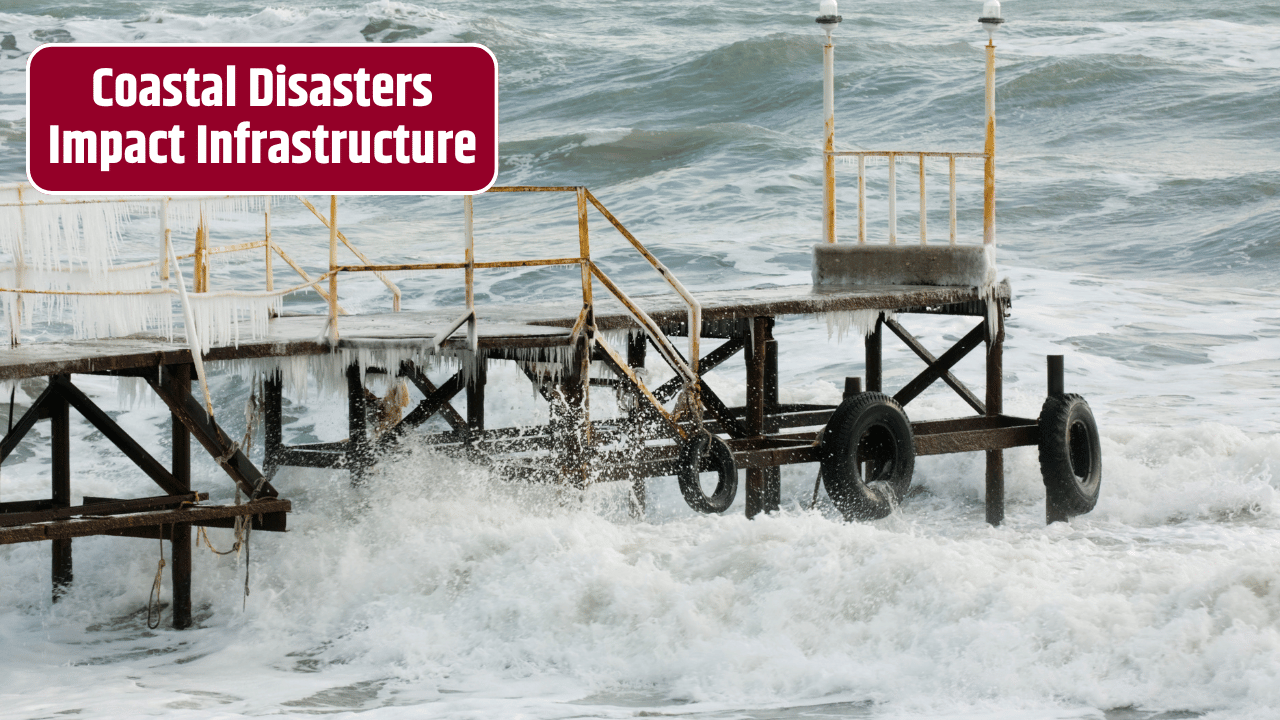Coastal zones are on the front lines of climate-related threats, where the intersection of rising seas, stronger storms, and aging infrastructure puts water systems at significant risk. From hurricanes and flooding to saltwater intrusion and erosion, natural disasters in these regions can overwhelm water infrastructure, disrupt services, and compromise public health. Understanding and addressing these vulnerabilities is critical to safeguarding communities and building resilience into the future.
Table of Contents
Why Coastal Water Infrastructure Is at Risk
Coastal areas are densely populated, economically vital, and environmentally sensitive. They are home to critical water infrastructure—such as drinking water intakes, wastewater treatment plants, stormwater systems, and desalination facilities—all of which face elevated risks from natural disasters.
Key Vulnerabilities:
- Storm surge and flooding: Can damage or submerge infrastructure, leading to service outages and contamination.
- Saltwater intrusion: Rising sea levels push saltwater into freshwater aquifers, reducing the quality of drinking water supplies.
- Erosion and land subsidence: Undermine the physical foundations of pipes, pumping stations, and treatment facilities.
- Wind damage: Hurricanes and tropical storms can destroy above-ground equipment, power supplies, and monitoring systems.
These risks are compounded by outdated infrastructure and a lack of redundancy in critical systems.
Natural Disasters Threatening Coastal Water Systems
| Natural Disaster | Impact on Water Infrastructure |
|---|---|
| Hurricanes | Flooding, wind damage, power outages |
| Coastal Flooding | Inundation of treatment plants and pumping stations |
| Sea-Level Rise | Saltwater intrusion into aquifers and water systems |
| Storm Surge | Rapid submersion of low-lying facilities |
| Tsunamis (rare but severe) | Catastrophic destruction of coastal water systems |
Case Studies of Infrastructure Failures
- Hurricane Sandy (2012): Inundated wastewater plants in New York and New Jersey, discharging billions of gallons of untreated sewage into waterways.
- Hurricane Harvey (2017): Overwhelmed Houston’s stormwater system, leading to severe flooding and contamination risks.
- Florida’s Coastal Aquifers: Increasingly threatened by saltwater intrusion, affecting potable water for millions of residents.
Strategies for Strengthening Resilience
1. Elevating and Hardening Critical Infrastructure
Raising or relocating facilities out of flood zones is one of the most effective strategies. Protective barriers, floodproofing, and use of corrosion-resistant materials are also essential.
- Elevated pump stations
- Floodwalls and levees
- Waterproof electrical systems
- Relocated treatment facilities
2. Incorporating Green Infrastructure
Nature-based solutions such as wetlands, dunes, and mangroves can buffer storm surge, reduce flooding, and protect water intakes.
- Living shorelines
- Constructed wetlands
- Permeable surfaces in urban areas
3. Redundancy and Emergency Preparedness
Building backup systems and planning for outages ensures continuity of services.
- Backup generators and mobile treatment units
- Emergency water supply and distribution plans
- Mutual aid agreements among utilities
4. Monitoring and Real-Time Data Systems
Installing sensors and smart technologies helps utilities track storm impacts, respond quickly, and assess risks before disasters strike.
- Flood sensors
- Remote monitoring systems
- Predictive analytics for storm modeling
5. Policy and Planning Integration
Resilient coastal water management requires long-term, cross-sector planning involving local governments, utilities, and emergency response agencies.
Key policies include:
- Climate adaptation and hazard mitigation plans
- Zoning and building codes that restrict development in flood-prone areas
- Federal and state grants for climate-resilient infrastructure upgrades
Funding Coastal Resilience Efforts
Upgrading infrastructure in coastal zones is costly but essential. Funding sources include:
- FEMA’s Building Resilient Infrastructure and Communities (BRIC) program
- EPA Clean Water and Drinking Water State Revolving Funds
- Infrastructure Investment and Jobs Act (IIJA)
- NOAA Coastal Resilience Grants
Public-private partnerships and community-based funding models can also support local adaptation initiatives.
Water infrastructure in coastal areas is uniquely vulnerable to natural disasters, yet with proactive planning and targeted investment, these systems can become strongholds of community resilience. By integrating engineering solutions with nature-based defenses, leveraging smart technologies, and aligning local policies with federal funding, coastal communities can better prepare for the realities of a changing climate.
FAQs
Why are coastal water systems more vulnerable than inland systems?
Coastal infrastructure is directly exposed to sea-level rise, saltwater intrusion, and storm surge, making it more prone to flooding and corrosion.
What is saltwater intrusion and why is it a concern?
Saltwater intrusion occurs when seawater encroaches into freshwater aquifers, contaminating drinking water supplies and damaging water treatment infrastructure.
How can green infrastructure help coastal resilience?
Green solutions like wetlands and mangroves absorb wave energy, reduce flooding, and protect infrastructure naturally.
What role does policy play in improving coastal water resilience?
Policy shapes zoning, building codes, emergency preparedness, and funding—critical components for long-term resilience.
Can decentralized systems help coastal areas?
Yes. Decentralized systems can provide flexible and resilient options in areas where centralized infrastructure is too risky or costly to maintain.














